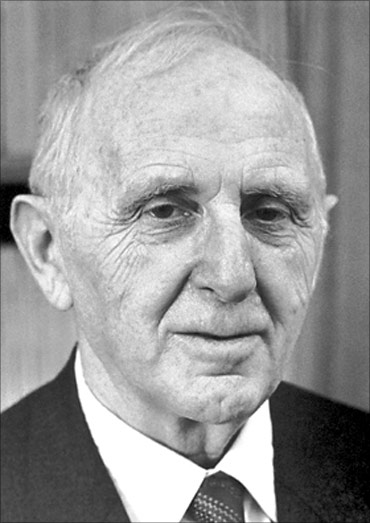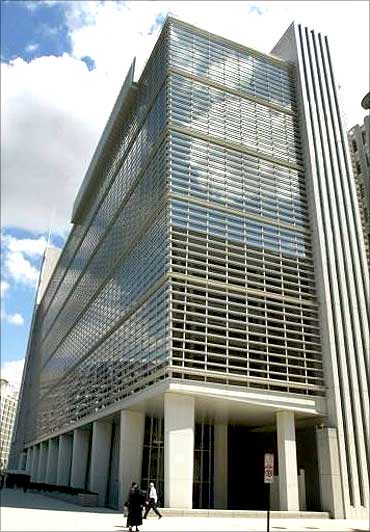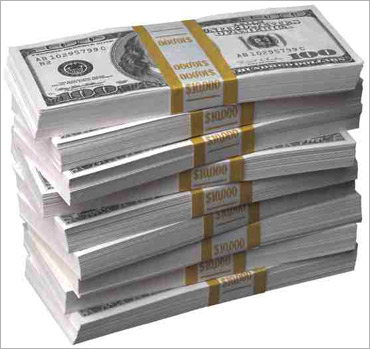 | « Back to article | Print this article |
GDP: Interesting facts you must know
The gross domestic product (GDP), or gross domestic income (GDI), is the market value of all final goods and services produced within a country in a given period of time.
The Gross Domestic Product in India expanded 8.90 per cent in the third quarter of 2010 over the previous quarter.
From 2004 till 2010, India's average quarterly GDP growth was 8.40 per cent, hitting a record high high of 10.10 per cent in September 2006. In 2004, the GDP fell to a low of 5.50 per cent in December 2004.
India is set to clock a GDP growth rate of 8.6 per cent this fiscal. But how many people in India are out of poverty? What does the GDP means to thousands of people who go hungry everyday? So is GDP the correct assessment of an economy's success? How did GDP evolve and do GDP figures actually represent a nation's growth?Click NEXT to read on . . .
GDP: Interesting facts you must know
The idea of gross domestic product came into existence after the Great Depression and World War II.
GDP was first developed by Simon Kuznets for a United States Congress report in 1934. His idea was to calculate all economic production by individuals, companies and the government in a single measure. According to him, GDP would rise in good times and fall during any crisis, Foreign Policy said.Click NEXT to read on . . .
GDP: Interesting facts you must know
Click NEXT to read on . . .
GDP: Interesting facts you must know
Click NEXT to read on . . .
GDP: Interesting facts you must know
In June 1978, Irving B. Kravis, Alan W. Heston, and Robert Summers compiled the first estimates of GDP per capita worldwide, with figures for more than 100 countries, according to Foreign Policy.
Click NEXT to read on . . .
GDP: Interesting facts you must know
Mahbub ul Haq was a visionary economist and creator of UNDP's widely acclaimed Human Development Report.
Click NEXT to read on . . .
GDP: Interesting facts you must know
In 2001, post the technology downfall and 9/11 attacks, US economy crashed. Despite the economy recovery, between 2002 and 2006, personal incomes fell sharply.
The gross domestic product (GDP) in the United States expanded 3.2 percent in the fourth quarter of 2010 over the previous quarter. From 1947 to 2010, the average quarterly GDP growth was 3.30 percent hitting a record high of 17.20 per cent in March 1950 and a low of -10.40 percent in March 1958.Click NEXT to read on . . .
GDP: Interesting facts you must know
In 2004, Wen Jiabao, the Chinese premier, announced that the green GDP index would replace the Chinese GDP index itself as a performance measure for government and party officials at the highest levels.
The first green GDP accounting report, for 2004, was published in September 2006. It showed that the financial loss caused by pollution was 511.8 billion yuan ($66.3 billion), or 3.05 per cent of the nation's economy.
Click NEXT to read on . . .
GDP: Interesting facts you must know
It is more important now than ever to come to grips with the limitations of GDP as a measure of well-being, according to Joseph Stiglitz of Columbia University.
"In many cases, GDP statistics seem to suggest that the economy is doing far better than most citizens' own perceptions. Moreover, the focus on GDP creates conflicts: political leaders are told to maximize it, but citizens also demand that attention be paid to enhancing security, reducing air, water, and noise pollution, and so forth - all of which might lower GDP growth. The fact that GDP may be a poor measure of well-being, or even of market activity, has, of course, long been recognized," Joseph Stiglitz explains.
Click NEXT to read on . . .
GDP: Interesting facts you must know
People will be asked to rate their own well-being. The first official happiness index will be published in 2012.
According to Cameron, GDP is an incomplete way of measuring a country's progress.










